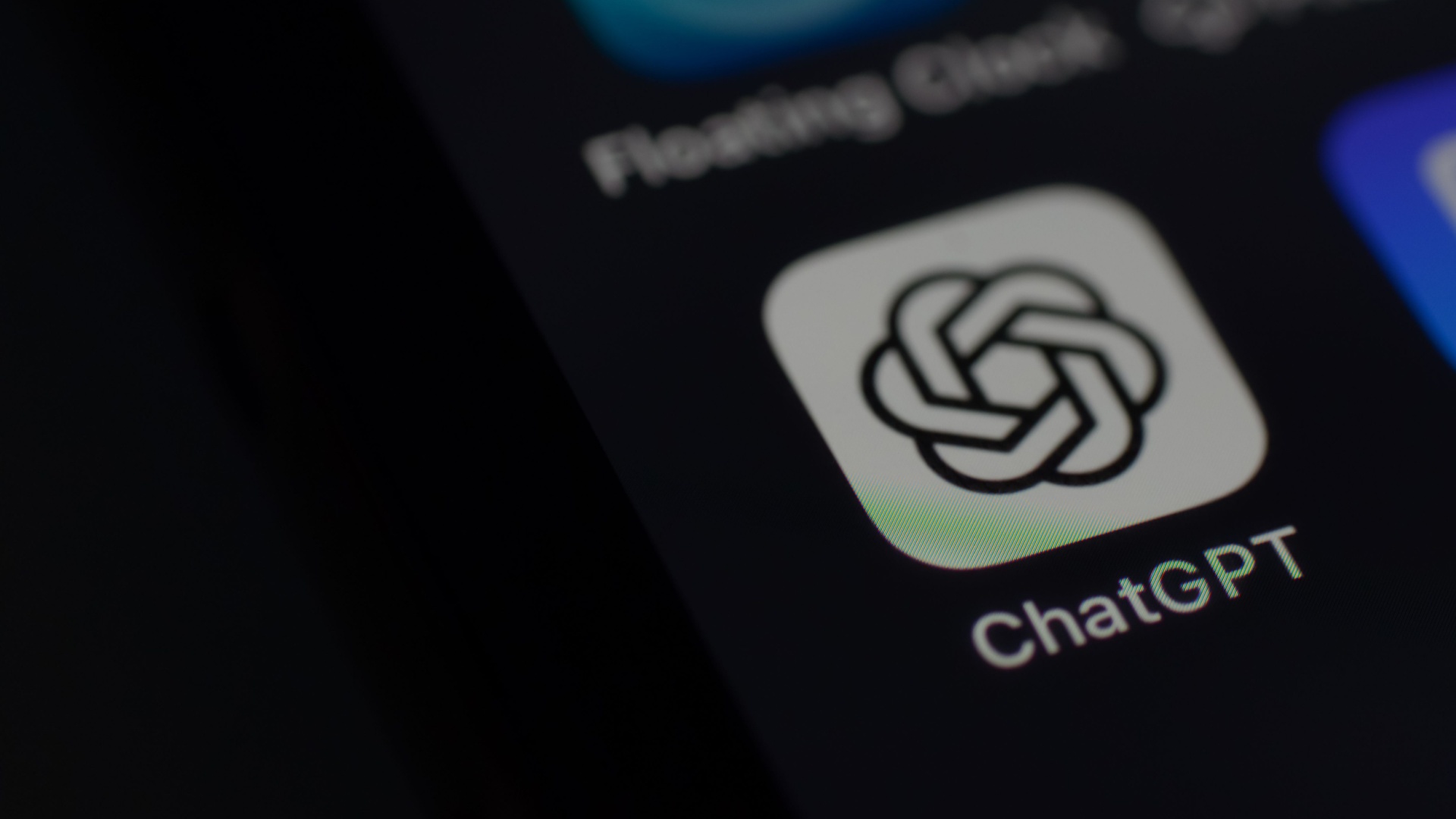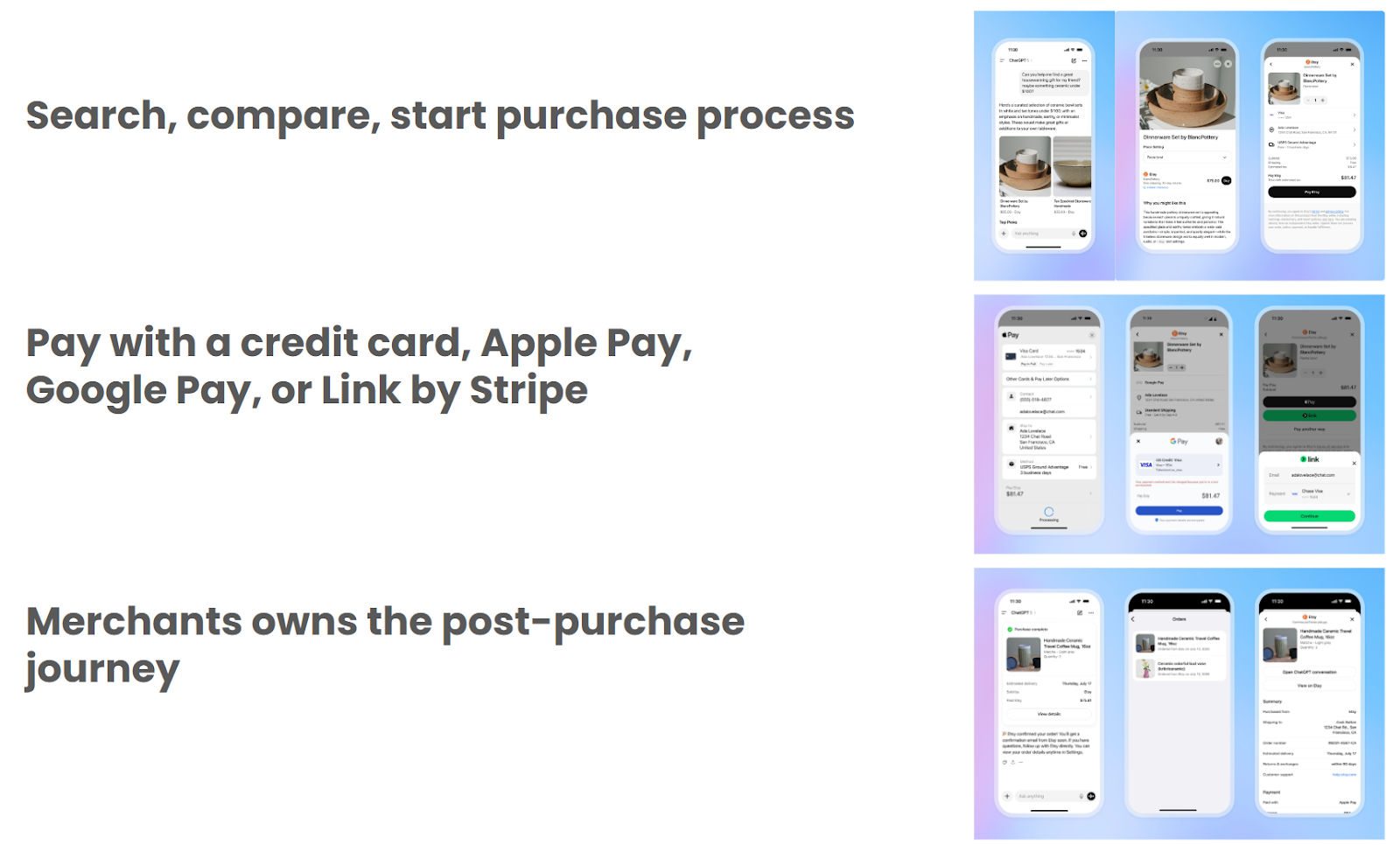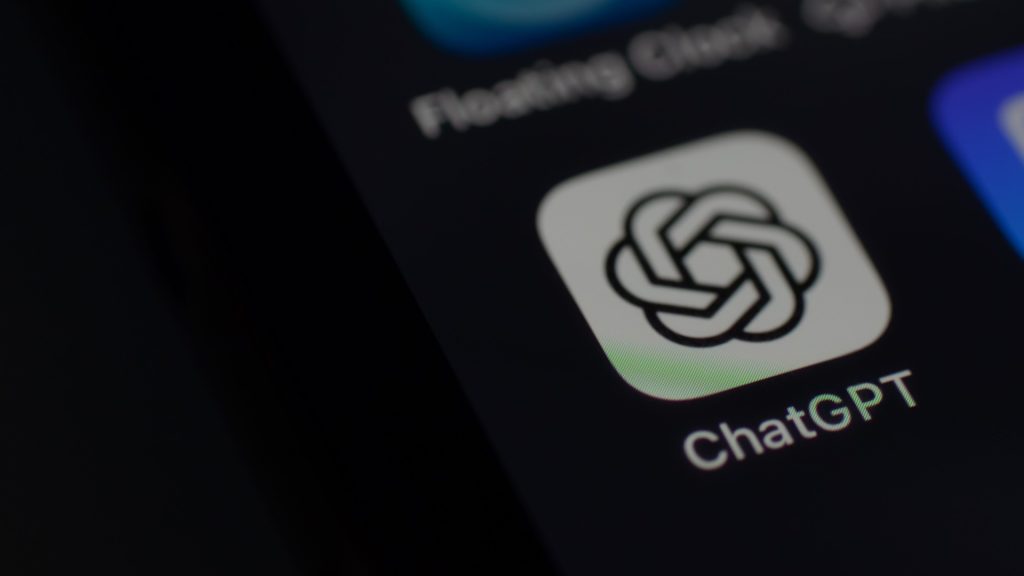Instant Checkout in ChatGPT brings agentic commerce to life

OpenAI has announced Instant Checkout on ChatGPT.
ChatGPT acts as an intermediary agent for commerce purchases on behalf of the customer.
This provides a foundation that connects people and businesses for the next era of agentic commerce.
What does the buying process look like?
The Instant Checkout flow keeps ChatGPT at the center of every step – from discovery to payment confirmation.
- After finding a product through conversations with ChatGPT, the user taps “Buy” and confirms payment and shipping.
- ChatGPT passes this signal, and the merchant then gathers fulfillment options. ChatGPT presents these options to the user who makes a selection. This information is again passed to the merchant by ChatGPT.
- The merchant calculates the tax and final price. ChatGPT renders that total to the user, who then confirms the purchase.
- ChatGPT gathers secure payment tokens and other details and passes them to the merchant. That merchant then accepts or declines the order.
- The payment processor then charges the payment method, and confirmations cascade down the line: merchant, ChatGPT, and user.

How ChatGPT’s Instant Checkout stacks up to Perplexity’s ‘Buy with Pro’
Instant Checkout on ChatGPT sounds similar to Perplexity’s “Buy with Pro,” which launched last November.
The difference? ChatGPT’s version:
- Drops the “free shipping” perk.
- Removes the paid-subscriber limitation.
- Gives merchants a faster path to participate – all with the potential to scale much faster given ChatGPT’s far larger user base.
Dig deeper: ChatGPT Shopping is here – and it’s changing ecommerce SEO rules
Get the newsletter search marketers rely on.
See terms.
The opportunity – and early friction – in ChatGPT’s checkout experience
This underscores the importance of measuring brand and product visibility in ChatGPT and properly optimizing product feeds for agentic commerce experiences.
Though this experience is launching as organic/non-sponsored for now, we expect it’s only a matter of time before OpenAI rolls out a paid placement version.
With that noted, it remains to be seen if consumer behavior will keep up with technology.
At the moment, performing a transaction requires significant prompting and allows for limited selection, resulting in a poor user experience, at least for this first iteration.
What’s available now?
Instant Checkout is currently available for U.S. merchants who sell on Etsy, supporting single-item purchases only.
This is the first stage of the rollout, with more merchant integrations expected over time.
How merchants can participate
Merchants who want to move forward can:
- Integrate their products into ChatGPT Search results.
- Enable Instant Checkout through the Agentic Commerce Protocol (ACP).
Merchants pay a small fee on completed purchases – refunded if the product is returned – while the experience remains free for users.
ChatGPT acts as the user’s AI agent, securely passing information between the user and the merchant.
ACP is designed to be straightforward to integrate and flexible across payment processors and platforms.
How organic visibility works in ChatGPT
Product results are organic and unsponsored, ranked based on relevance to the user’s query and the context of the conversation.
The embedded shopping experience must be triggered by user intent during the conversation.
When that happens, ChatGPT displays product cards that allow users to purchase directly.
Instant Checkout items do not receive preferential ranking, according to OpenAI.
However, when multiple merchants sell the same product, ChatGPT considers:
- Availability.
- Price.
- Quality.
- Whether the merchant is a primary seller.
- Whether Instant Checkout is enabled to optimize the experience.
Dig deeper: How ChatGPT search ranks products and merchants
How orders, payments, and fulfillment work
Orders, payments, and fulfillment are handled by the merchant using their existing systems. Stripe users can enable payments with a single line of code.
When someone places an order, ChatGPT sends the necessary details to the merchant’s backend via ACP.
The merchant then:
- Accepts or declines the order.
- Processes the payment.
- Manages fulfillment and customer support as usual.
What’s still evolving
Many details are still emerging around how ChatGPT will operate the broader Instant Checkout function.
Our team is closely tracking several areas, including:
- Fees and cost structure: While OpenAI has said merchants will pay a small fee on completed purchases, the exact amount has not been disclosed.
- Shopify integrations: These are next in line, opening Instant Checkout to more than a million Shopify merchants once available. The specific steps for merchants to activate and run the integration have not yet been detailed by OpenAI.
- Beyond Shopify: Additional merchant integrations are in development.
- Revenue optimization capabilities: Basket size, cross-sell, and up-sell functionality – including support for multi-item transactions – are still being defined.
- Global reach: For now, Instant Checkout is limited to U.S. consumers.
Dig deeper: When AI agents do the shopping: Insights from 100 conversations with ChatGPT Agent mode
Preparing product feeds
Now is the time for merchants to review how complete and descriptive their product data is.
Feed quality directly impacts how well ChatGPT can match products to conversational prompts and generate accurate responses.
There are key aspects of a client’s feed that can help determine fit:
- Are key product descriptors present – especially those that influence customer decisions? In the conversational context of ChatGPT queries, these attributes carry high value.
- How complete is the product schema? The more structured information provided, the more effectively ChatGPT can reference those details in responses.
Example: height, width, and depth measurements of a nightstand.
The richer and more structured your feed, the stronger your visibility potential in ChatGPT’s embedded shopping experience.
Next steps for merchants
Merchants can apply through OpenAI’s Instant Checkout form. (Etsy and Shopify sellers are automatically covered.)
OpenAI will onboard eligible merchants on a rolling basis.
In the meantime:
- Prepare and validate your product feeds.
- Begin building integrations.
- Track organic product visibility within ChatGPT’s shopping experience.
- Optimize product pages for high-intent prompts that trigger embedded shopping.







Recent Comments